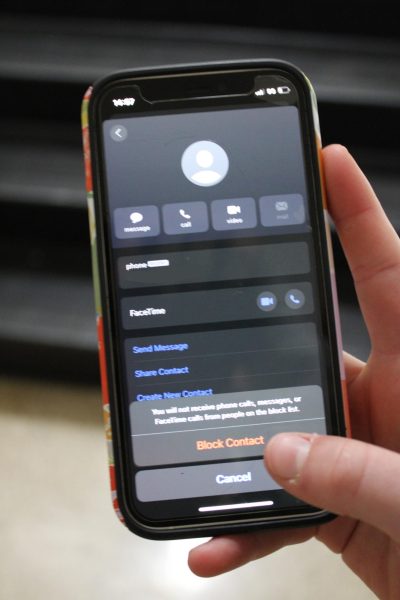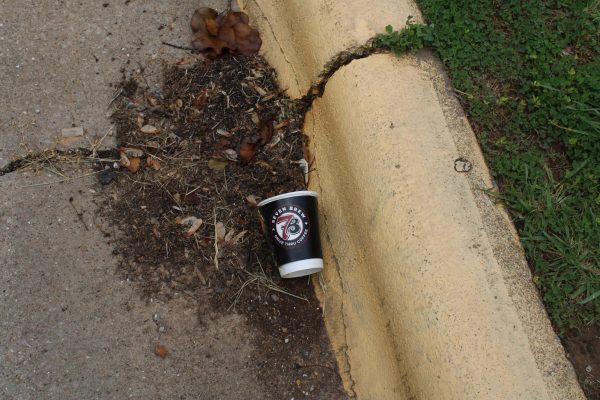A Gay Agenda
The fight for LGBTQ+ Sex Education in schools.
According to Child Trends, another organization who are focused on improving the lives if children and youths, only 15 states and the District of Colombia have a majority of schools that teach LGBTQ+ sex education. The Human Dignity Trust, an international organization that uses the law to defend LGBTQ+ rights, says that it’s a crime in 71 countries for men to have sex with men. This makes it more likely for same-sex couples to contract sexually transmitted diseases because students aren’t taught practices for how to stay safe during sex. “I think schools should teach it because it’s the same thing, just different genders. I think that it wouldn’t be fair for a gay person to learn about straight sex but not their own,” lesbian junior Morgan Paquin said. If schools can teach students how to be safe during heterosexual sex, they should also teach how to stay safe during homosexual sex. Classes also need to discuss asexual students. Asexuality means that a person doesn’t have sexual feelings or attraction. Some asexuals still engage in sex, some don’t. Either way, it’s something that should be brought up when discussing safe sex. It would be beneficial for schools to bring up other sexualities in general during sexual education. This way younger people wouldn’t be forced to try and figure everything out themselves. “If our school taught LGBT sex it would only be beneficial. Many young LGBT youth have trouble understanding how to practice safe sex, and more often than not even feel shameful for not understanding it. I would support the schools if they taught LGBT sex education and even educated more on LGBT history,” bisexual sophmore Ramona Carlson said. Students can learn more about who they are in a safe environment, and they won’t feel left out or different. Many people are still homophobic, especially in more right-leaning states. If we have a more inclusive curriculum, it’ll help younger people break away from the views of their parents. This means it’s incredibly important for schools to teach more about same-sex couples in Sex-Ed, so that children will be able to accept themselves a bit easier if they have more conservative parents. Right now, most people in same-sex relationships have to turn to YouTube or websites like the Center for Disease Control and Prevention to learn how to stay safe. While the CDC is a good place to learn, websites aren’t always reliable sources, nor is it a good idea for teens with conservative parents. There could be misinformation being spread, which would obviously be even more harmful. Learning safety from the internet also isn’t as useful because people can’t ask the personal questions they might have. If schools teach LGBT Sex-Ed, it’ll be less harmful for everyone in the long run. “Schools should teach LGBTQ+ Sex-Ed because many times, those students are uninformed. This leads to STD’s, emotional stress, and ultimately a bad relationship with sex. The only way to ensure sexual safety in all students is to teach everyone safe practices,” Sophmore Kassidy Ellis said. According to the CDC, “Gay, bisexual, and other men who have sex with men are 17 times more likely to get anal cancer then heterosexual men.” This doesn’t include men with HIV, who have an even higher chance. Most STDs’ are spread by genital contact, meaning that a lot of men who have sex with men, and other people who have same-sex relationships may be more likely to contract an STD. Schools that teach abstinence are the opposite of the solution. “Abstinence only” programs make things worse for everyone. An abstinence only program is when schools encourage kids to not have sex until marriage. According to the National Prevention Information Network, Schools with this policy result in more teen pregnancies, and higher rates of sexually transmitted diseases such as HIV/AIDS. The easiest way to solve this problem would be to ask questions about how to stay safe in same-sex relationships during the sex-ed unit in your health class. Another way students can push to make a change is by emailing the school board about changing the curriculum to include LGBTQ+ safe sex education. The district won’t change the curriculum unless students show the need for it. We have to show that this is something we must learn for the safety of ourselves, our friends, and society as a whole.






